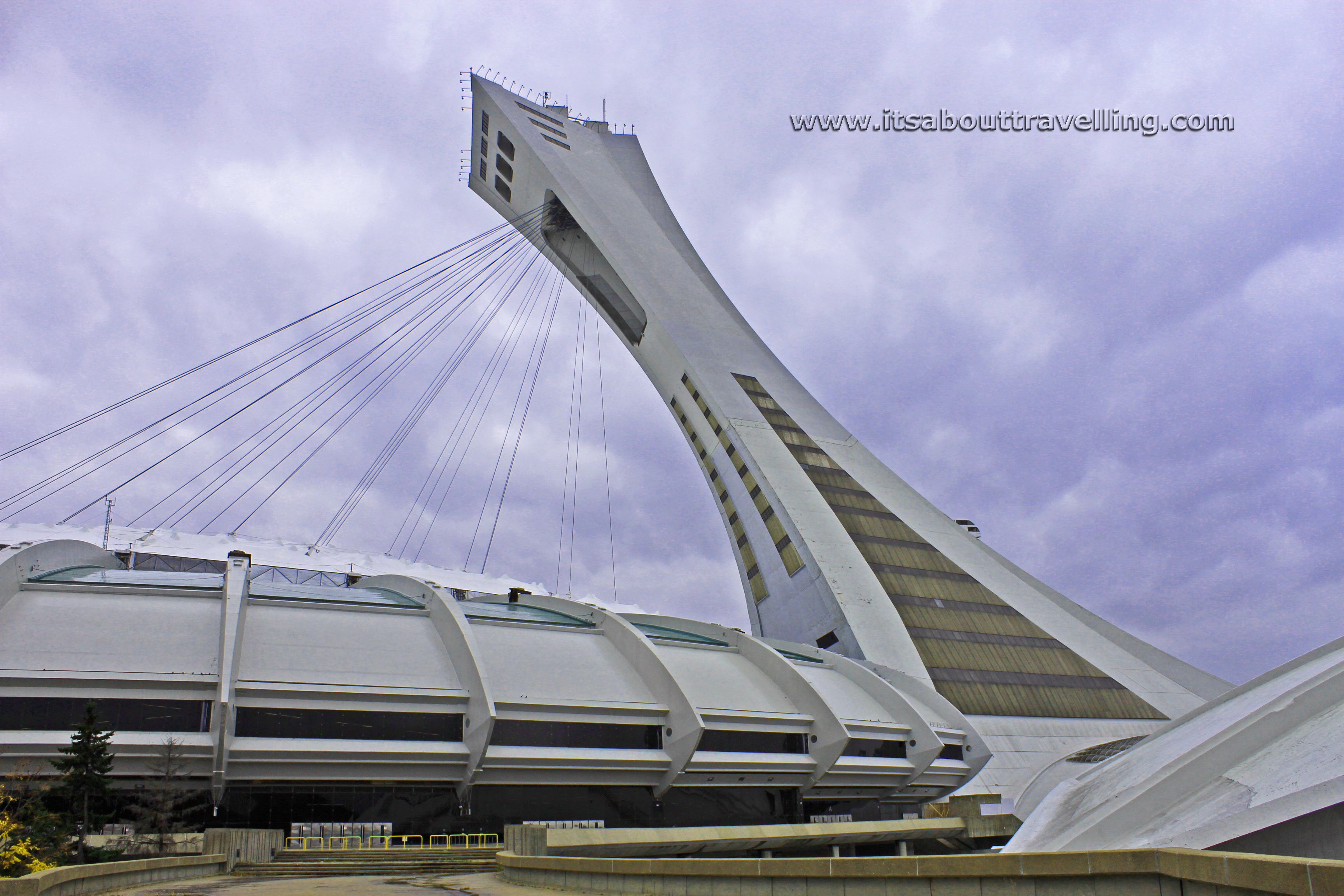Slated to be finished in time for the 1972 Major League Baseball season. Partially but sufficiently completed just in time for the 1976 Olympic Games. Finally completed in 1987. Often in the news for massive hunks of concrete falling to the ground. Now, a special events stadium that sits empty most of the year.
Yet, the Olympic Stadium Montreal, Quebec is iconic in the architectural world and a must see if visiting the Quebec city. Although it was originally planned for completion in 1972, the ground was not broken on the project until April, 1973. It had been a stipulation with the Montreal Expos baseball franchise was granted for the 1969 National League season that a domed stadium would be in place by 1972. Oops. The stadium opened July 17, 1976 for the summer Olympics and was certainly not a domed stadium at the time.
Not quite eight years old, that’s me in front of, I believe, the aquatic centre during the 1976 Olympics. I recall watching a soccer game in the stadium then some gymnastics downtown at the Montreal Forum. This was the first of many times I would sit in the venue.
The rest of the images are from an October 22, 2013 day trip to Montreal via Megabus Canada. It was a dreary morning but it was nice to see the stadium looked to be in a state of revitalization with areas fenced off for construction.
The original plan was for construction to cost around $134 million. By the time Olympic Stadium opening in 1976, that number had ballooned to nearly $800 million. After the tower had finally been completed and a roof put in place in 1987, the estimated cost of the stadium was well over $1 billion dollars.
After starting life in the Major League’s at Jarry Park, the Montreal Expos finally moved into their new digs in 1977. Jarry Park seated over 28,000 for baseball which would have been more than enough in the later years of the franchise.
Opening day came on April 14, 1977. Montreal hosted the Philadelphia Phillies and fell 7-2 in the game. Fittingly, their last game played at the stadium was also a loss. On September 29, 2004, the Expos were dropped by the Florida Marlins 9-1. The following season, the franchise had a new home and are the current Washington Nationals.
The greatest game Olympic Stadium hosted was probably the beginning of the demise of the club. Black Monday occurred on October 19, 1981. Montreal was playing off against the Los Angeles Dodgers in the National League Championship Series. At the time, the series was a best of five. The teams were tied at two wins each going into the Monday game. Montreal was in it until a ninth inning homerun by L.A.’s Rick Monday broke their backs and they lost their chance at a World Series appearance by a 2-1 score.
Through the years, the stadium has also been home to the Montreal Alouettes of the Canadian Football League, the Montreal Manic of the NASL (soccer), the Montreal Machine of the World League of American Football and the Montreal Impact of the MLS (soccer).
The Alouettes play just playoff games at the venue. The Impact play the occasional home game there, as well.
Once the tower was completed, it made world history. It remains the world’s tallest inclined structure at 175 metres or 574 feet tall. At the top is the Montreal Observatory, offering 360 degree views of the city and surrounding area. The observatory is accessed by a funicular that runs up the outside of the towers spine. The capacity on the funicular is for 76 people.
The attendance record at Olympic Stadium was not set during the 1976 Olympics, during a Grey Cup final in the CFL or at an Expos game. In 1977, Pink Floyd played a concert before a record crowd of 78,322.
There used to be a yellow seat in the upper 300 level of the stadium. This seat marked the longest homerun ball ever hit in the park. The hitter was Willie Stargell of the Pittsburgh Pirates. Somewhere, I have a picture of myself sitting in that chair but have no idea where it is. The seat is gone now, moved to the Canadian Baseball Hall of Fame in St. Mary’s, Ontario.
On the grounds, other buildings from the 1976 Olympics remain. The Velodrome was converted to the BioDome. The Olympic Village is now a regular housing unit. The Maurice Richard Arena was home to the QMJHL Montreal Rocket for a short time. The Aquatic Centre remains as it was. The Pie-IX Metro Station is still located beneath the stadium.
The video below was taken the same day as the images above (except for the one from 1976!).
